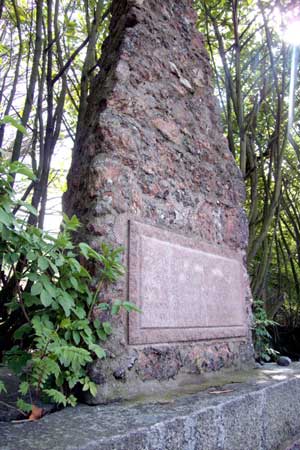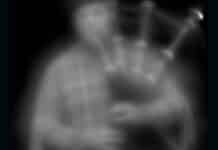DR FIONA-JANE BROWN tells how an 19th Century school prank gone wrong still disturbs Aberdeen to this day …
“Art and part in Downie’s slaughter!” was a charge levelled against students of Kings College, Aberdeen, by street urchins from the early 19thcentury. This supposed ‘crime’ was a prank involving a sacrist or janitor called George Downie, which went too far.
In the days when the students were all male, and aged between 14 and 20, any time between the 15th and 19th centuries, the sacrists not only looked after the fabric of the university’s chapel, but they enforced discipline. Students were not to leave the college without permission, and if caught doing so, would be fined. George Downie was a real stickler for the college rules and thus highly unpopular with the students. They decided to get their own back one night when he was on duty alone.
The students jumped him in the quad and next he knew, Downie was in the college’s library, now arranged like a mock court, surrounded by masked students. The ‘judge’ informed Downie he was to stand trial for his ‘crimes’ against the student body. A litany of complaints was led by the anonymous boys, resulting in the judgement – DEATH!
At the stroke of midnight, the sacrist was told, he would be beheaded. Downie pleaded with them to stop their nonsense, but was soon silenced by the sight of a student with a huge axe. The fatal chimes sounded his doom. The blade was lifted and the handle swung; Downie shut his eyes. Just when he expected to feel cold steel, instead, a student slapped his neck with a wet cloth. Downie slumped to the ground. Realising he had in fact died of fright, the students panicked, and the body was spirited away.

To this day the story is still shrouded in mystery. The university has no record of a George Downie being employed; a young man named Robert Mudie was the first to circulate the tale in 1825, having it published in the Castle Spectre magazine, and a strange cairn, an apparent memorial to Downie, stands at the foot of Tillydrone Avenue in Seaton Park.
The cairn was the work of merchant and songwriter, John Ewen, who had been allowed to create a ‘folly’ for his friend Alexander Leslie, laird of Powis, in the family’s pleasure garden at Berryden, the site of Sainsbury’s today. The cairn was moved after 133 years to its present location in 1923. Now it bears a plaque claiming its connection to the story of Downie.
Robert Mudie’s grandfather had been a sacrist at Kings, so did he hear the tale from him and take it for gospel? Or did Ewen create the legend with the building of the cairn? The story endures to the present, but we can only conclude as Mudie did: “I cannot tell how the truth may be; I say the tale as it was told to me.”
DR FIONA-JANE BROWN is a folklorist and tour operator in Aberdeen, North-East Scotland.









